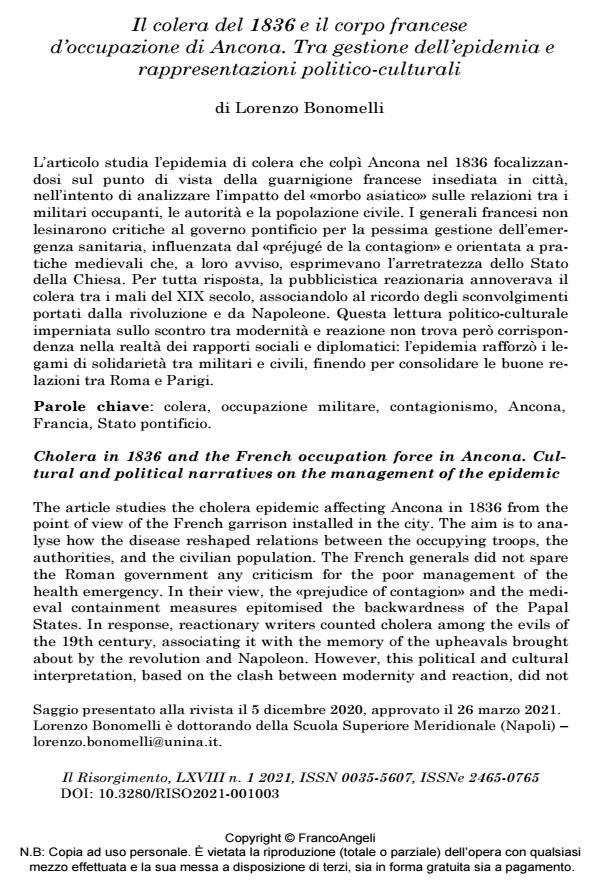Cholera in 1836 and the French occupation force in Ancona. Cultural and political narratives on the management of the epidemic
Journal title IL RISORGIMENTO
Author/s Lorenzo Bonomelli
Publishing Year 2021 Issue 2021/1 Language Italian
Pages 33 P. 34-66 File size 287 KB
DOI 10.3280/RISO2021-001003
DOI is like a bar code for intellectual property: to have more infomation
click here
Below, you can see the article first page
If you want to buy this article in PDF format, you can do it, following the instructions to buy download credits

FrancoAngeli is member of Publishers International Linking Association, Inc (PILA), a not-for-profit association which run the CrossRef service enabling links to and from online scholarly content.
The article studies the cholera epidemic affecting Ancona in 1836 from the point of view of the French garrison installed in the city. The aim is to analyse how the disease reshaped relations between the occupying troops, the authorities, and the civilian population. The French generals did not spare the Roman government any criticism for the poor management of the health emergency. In their view, the «prejudice of contagion» and the medieval containment measures epitomised the backwardness of the Papal States. In response, reactionary writers counted cholera among the evils of the 19th century, associating it with the memory of the upheavals brought about by the revolution and Napoleon. However, this political and cultural interpretation, based on the clash between modernity and reaction, did not correspond to the reality of social and diplomatic relations. The epidemic strengthened the solidarity bonds between soldiers and civilians, and eventually consolidated the good relations between the Holy See and Paris.
Keywords: Cholera, military occupation, contagionism, Ancona, France, Papal States.
Lorenzo Bonomelli, Il colera del 1836 e il corpo francese d’occupazione di Ancona. Tra gestione dell’epidemia e rappresentazioni politico-culturali in "IL RISORGIMENTO" 1/2021, pp 34-66, DOI: 10.3280/RISO2021-001003